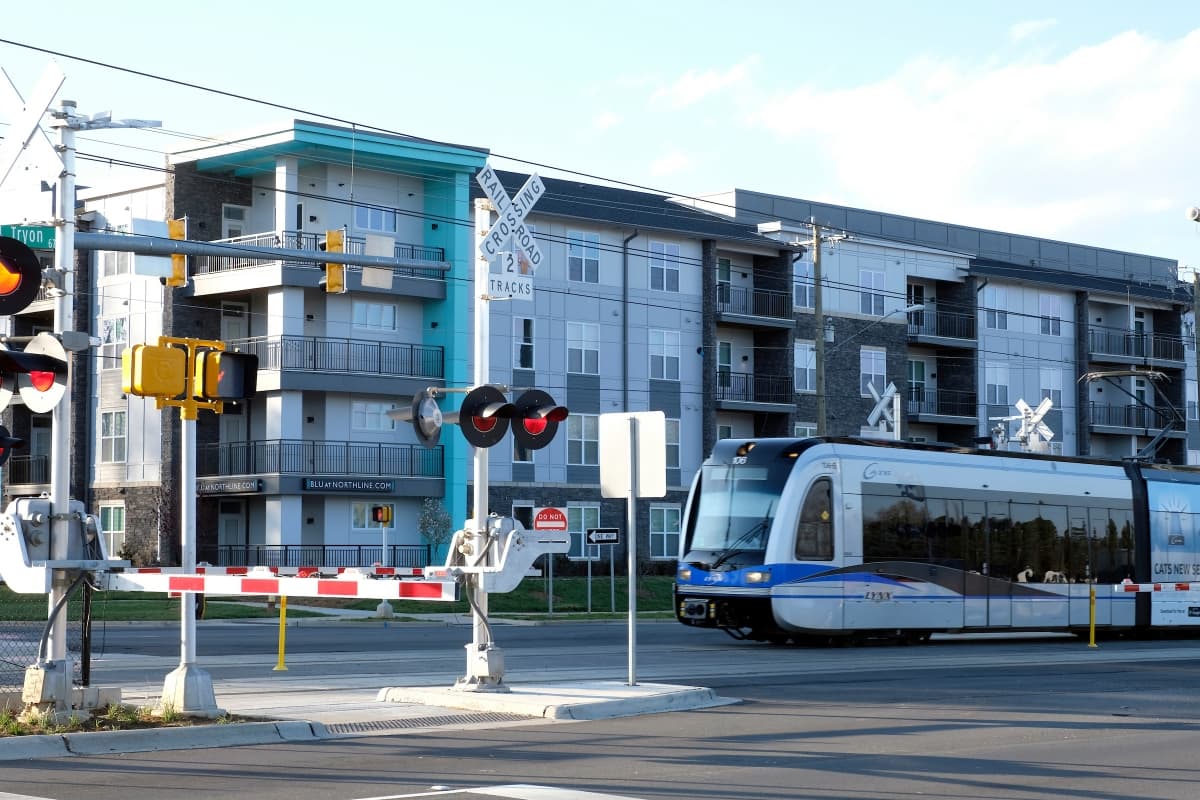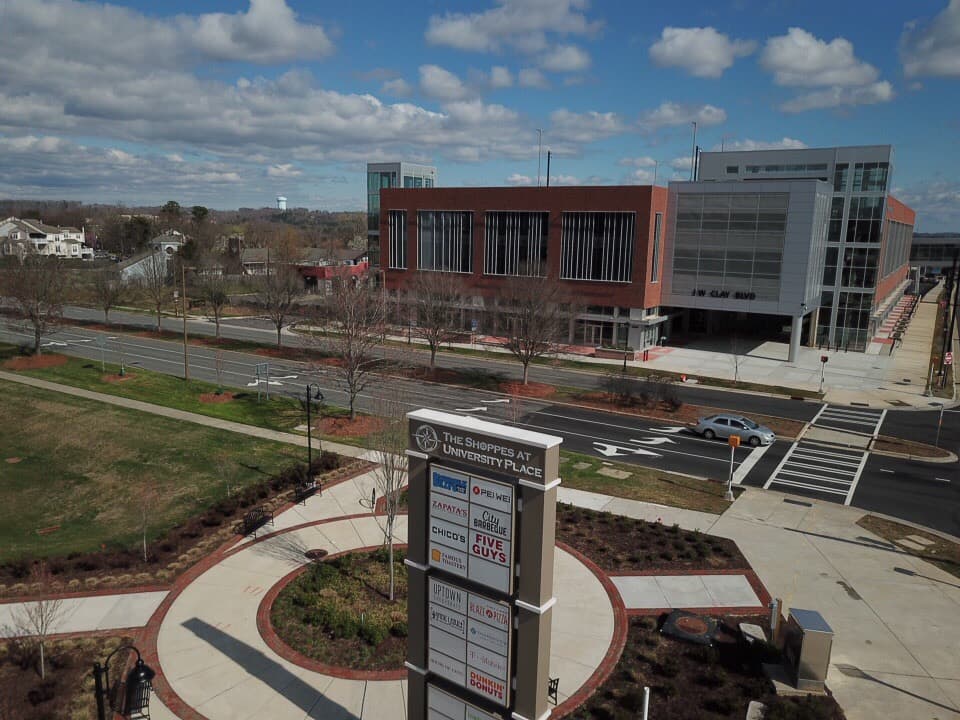It’s not uncommon for visitors to the 1,000-acre UNC Charlotte campus – if they haven’t seen it for years – to gasp at the changes. What 30 years ago was a campus of 12,000 students is now a nearly 30,000-student research university likely to grow to 35,000 students by 2025. Low-scale buildings from the 1960s and ’70s are joined by vast, red-brick edifices, commodious lawns, brick sidewalks and multistory parking garages. Yet even bigger changes could be coming to the area that surrounds campus: University City.
Today University City – a wedge broadly defined as running from Northlake Mall on the west to the Cabarrus County line on the east and north, and south to Sugar Creek Road and the Derita neighborhood – holds about 170,000 residents and 80,000 workers.
Since Charlotte’s first light rail line opened in 2007 running south from Uptown, the South Corridor has seen significant built or planned development. What should University City look forward to?
“We should prepare for growth,” said Tobe Holmes, planning and development director for University City Partners (UCP). Like many others, Holmes and UCP Executive Director Darlene Heater predict huge changes over time.
HOW UNIVERSITY CITY COULD CHANGE
Residential Housing
Even before opening, the Charlotte Area Transit System (CATS) $1.2 billion Blue Line Extension was shaping development. In February, the Charlotte Observer reported that its review of development plans found more than 5,000 apartments recently built, under construction or planned along the new light rail line toward University City.
A century-old mill building at Parkwood and Brevard Street in the Optimist Park neighborhood is being renovated into a food hall-brewery-office complex. The NoDa district – once a mill-village area that 20 years ago drew avant-garde artists, bars and restaurants – is seeing once-affordable homes rise in value as apartments go up beside the rail line.
Farther north, on North Tryon Street between the Tom Hunter and University City Boulevard stations, The Blu at Northline development has opened. Among its 377 units, it offers two-bedroom apartments for $1,375 to $1,625. A few blocks north, on an undeveloped field, Oxford Properties is building 338 apartments at the University City Boulevard Station. Median gross rent in the surrounding neighborhood, according to the Charlotte/Mecklenburg Quality of Life Explorer, is $753.
Mixed-Use Development
The station areas closest to UNC Charlotte aren’t like that empty field or the vacant or under-used old industrial buildings that were developed in South End. The areas around the J.W. Clay and McCullough stations developed in the 1980s and are largely car-dependent suburbia: few sidewalks; offices, disconnected stores and homes; widely separated and generally low-rise buildings surrounded by surface parking lots. That’s not the walkable form of development planners say best supports transit ridership.

“We need to be aspirational,” said Deb Ryan, an associate professor at UNC Charlotte’s College of Arts + Architecture who chairs the Charlotte-Mecklenburg Planning Commission. The station areas near the University have the potential to be wonderful places in the future, she noted. “Are we asking the right questions today?”
Transit Center
Some expect University City to see more intense development than South End, at least near the station areas. Many cite the draw of an almost 30,000-student university, the Atrium Health University Hospital and the nearby University Research Park. Charlotte Planning Director Taiwo Jaiyeoba envisions 10-story or higher buildings at stations closest to campus, possibly modeled on major, transit-oriented developments such as Mockingbird Station in Dallas.
Nevertheless, cautioned Holmes of University City Partners, “Don’t expect for things to happen overnight.”
Connections
Ryan envisions a hearty relationship between University planning and that of the surrounding areas.
“Rather than thinking about the University doing its thing, and the community on the other side of the highway doing its thing,” she said, “we can benefit most by expecting a strong town-gown relationship.”
Both the University and the surrounding area will benefit from improvements, said Darlene Heater of University City Partners. “We should all care about the community around the University and how it develops,” she stated. “The way the community develops around the University impacts the University’s ability to recruit students and faculty. It’s part of the attraction.”
Read more about development in University City, and explore other potential solutions to challenges facing our community at UNC Charlotte’s Urban Institute's online publication, PlanCharlotte.org.